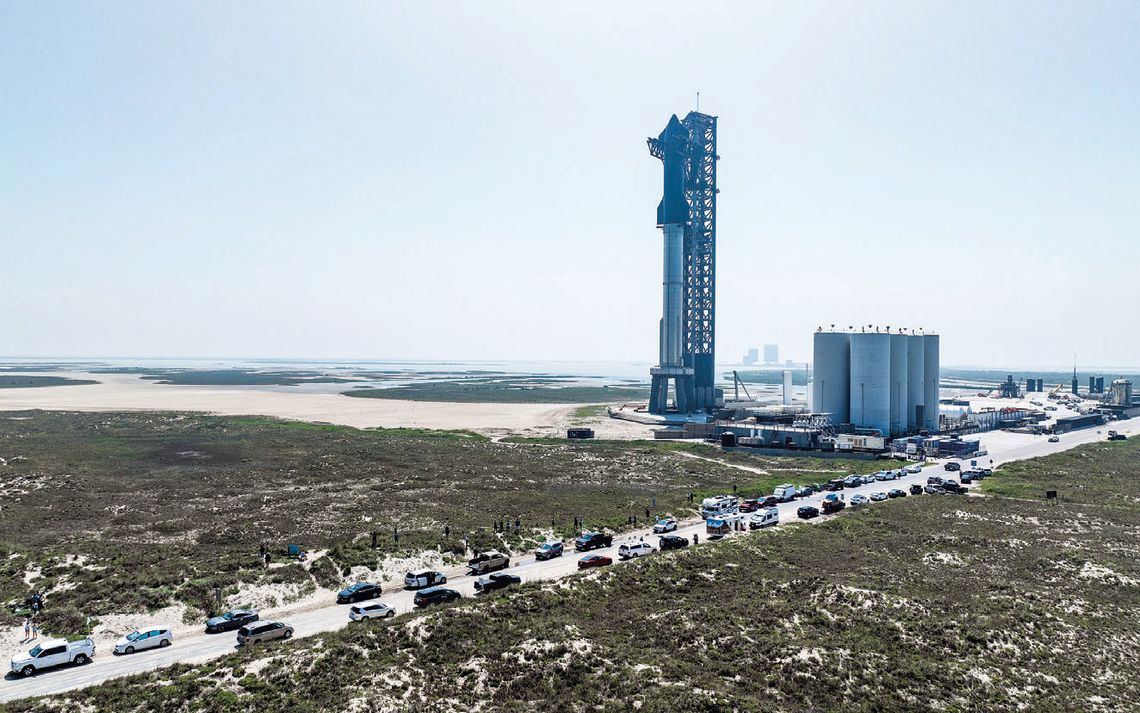BASTROP — SpaceX launched the ninth flight test of its Starship rocket system last week—the first reflight of a Super Heavy booster—an important step toward the company’s long-term goal of spacecraft reusability, according to representatives.
The launch occurred at 6:36 p.m. May 27 from Starbase, the company’s coastal launch site in South Texas. SpaceX, which continues to grow its Bastrop County presence, reported that the booster supporting the mission had previously flown in January, making it the first Super Heavy to be reused.
The booster completed its full ascent burn and successfully separated from the Starship upper stage using a hot-staging maneuver, followed by a high-angle descent and a boost-back burn aimed at its splashdown zone in the gulf.
However, SpaceX said contact was lost during the final landing burn about six minutes into flight when the booster experienced what the company called a “rapid unscheduled disassembly.”
“Developmental testing by definition is unpredictable, but every lesson learned marks progress toward Starship’s goal of enabling life to become multiplanetary,” the company said in a statement.
Starship’s upper stage continued as planned, igniting all six Raptor engines and reaching orbital altitude. SpaceX noted that this stage included hardware updates and engine improvements based on lessons from the vehicle’s eighth test flight earlier this year.
Although several inspace objectives were planned, including the first payload deployment from a Starship and a mid-flight engine relight, a pair of issues interfered, according to reports. A stuck payload bay door prevented the release of eight Starlink simulator satellites, and a control error forced the system to bypass the engine relight and reenter early.
SpaceX said contact with the upper stage was lost approximately 46 minutes after launch, with debris expected to fall in a pre-designated zone in the Indian Ocean.
The flight nonetheless marked progress in SpaceX’s development process, the company said, with critical data collected for future designs.
SpaceX’s Starship and Super Heavy rockets are designed as a fully reusable launch system intended for missions to low-Earth orbit, the moon and eventually Mars. The company’s Bastrop-based headquarters supports development of related technologies, including rocket hardware and satellite production.
.png)






